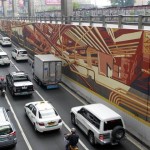A comparison of satellite images from Google Earth, between a lower and a higher income neighborhood shows how the number trees indicate its income state. Higher income communities tend to have more trees than those in the lesser income areas. This might explain the air quality in lesser income neighborhood.
They found that for every 1 percent increase in per capita income, demand for forest cover increased by 1.76 percent. But when income dropped by the same amount, demand decreased by 1.26 percent. That’s a pretty tight correlation. The researchers reason that wealthier cities can afford more trees, both on private and public property. The well-to-do can afford larger lots, which in turn can support more trees.
It seems like trees are luxury items and not a necessity for the environment and the people. But it might just be a scenario where the richer neighborhood has more than enough resources to provide space for trees and maintaining them.
This concept was already been published in 2008. But recently it was brought into the mainstream through a post by Tim De Chant on his Per Square Mile blog. He has updated the post with images that demonstrate inequality in several regions around the world.
Though this is not a scientific analysis, it is just alarming to think that access to even the most natural resource on the planet is dependent on humanity’s social and economic standards.
The way I see it. It is a case of the rich caring only for their property and the poor using their economic sate as ally by to not care at all.
more photos:
source: persquaremile






 Filipino Inventor Turns Plastic Trash Into Liquid Gold
Filipino Inventor Turns Plastic Trash Into Liquid Gold Urine Powered Generator - Produces 6 Hours Of Electricity In Just One Liter
Urine Powered Generator - Produces 6 Hours Of Electricity In Just One Liter Air Pollution Absorbing Paint - Manila Experiments with 'Purifying Paint'
Air Pollution Absorbing Paint - Manila Experiments with 'Purifying Paint' Smartphone Solar Charger Case - Works In The Sun and Shade
Smartphone Solar Charger Case - Works In The Sun and Shade






